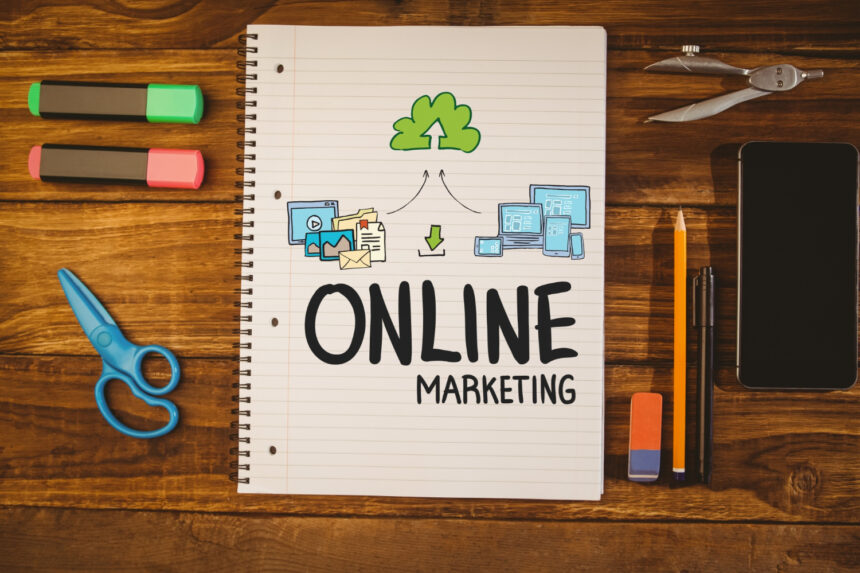Getting your small business noticed online is more important than ever. With so many competitors, smart digital marketing can help you stand out. The right online strategies put your business in front of more people, right when they’re looking for what you offer. Plus, digital marketing often costs less than traditional ads but brings in better results. Let’s explore how you can grow faster and reach the right customers with proven online marketing tactics.
Understanding the Foundations of Online Marketing for Small Businesses
Defining Online Marketing and Its Benefits
Online marketing uses the internet to promote your business. It includes options like social media, SEO, email, and advertising. These channels help you connect directly with potential customers. The best part? It often costs less than traditional ads and lets you see real-time data on what’s working. This means you can spend smartly and focus on strategies that boost sales.
Assessing Your Business Goals and Audience
Before jumping into marketing, define what you want to achieve. Do you want more local customers? Increase online sales? Knowing your goal guides your efforts. Also, understand who your customers are. What do they like? Where do they hang out online? Tools like Google Analytics or social media insights help you learn about their habits and preferences.
Setting a Realistic Budget and KPIs
Small businesses need a plan for how much to spend. Allocate your budget wisely across the channels that match your goals. Set clear Key Performance Indicators (KPIs) like website traffic, leads, or sales. Tracking these helps you see what’s working and what’s not, so you can make smarter choices.
Developing a Strong Digital Presence
Building an Optimized Website
Your website is your online home. Make it fast, mobile-friendly, and easy to navigate. Use clear calls-to-action (like “Shop Now” or “Contact Us”) to guide visitors. Also, optimize your site for search engines with relevant keywords and quality content, so customers find you easily when searching online.
Leveraging Local SEO for Greater Visibility
For local businesses, showing up nearby matters. Claim your Google My Business listing and keep it updated. Use local keywords like “bakery in downtown [City]” to attract nearby customers. Make sure your business info matches across all directories to build trust and improve search rankings.
Creating Engaging Content
Content helps attract visitors and keeps them interested. Share blogs, videos, or infographics about your products or industry. For example, recipe videos for a bakery or how-to guides for a hardware store. Regular content also improves your search rank and establishes your authority.
Harnessing Social Media Marketing
Choosing the Right Platforms
Not all social media channels suit every business. Do your customers prefer Facebook, Instagram, LinkedIn, or TikTok? Pick platforms where your audience spends time. For example, Instagram and TikTok work well for visual brands like fashion or food, while LinkedIn suits B2B services.
Developing a Content Calendar
Plan your posts ahead of time. Regular posting keeps your business top of mind. Mix it up with product photos, behind-the-scenes looks, customer stories, or special promotions. Encourage followers to share their experiences to add authenticity.
Engaging with Your Audience
Respond quickly to comments or messages. Asking questions and showing appreciation builds trust. Building a community fosters loyalty and turns followers into customers. Remember, social media is a two-way street.
Implementing Effective Paid Advertising Campaigns
Pay-Per-Click (PPC) Advertising
Google Ads and Bing Ads let your business appear at the top of search results. Use relevant keywords to target people searching for your services. Write clear, appealing ad copy focused on what makes your business special. Set a daily budget to keep costs manageable.
Social Media Advertising
Platforms like Facebook, Instagram, and LinkedIn allow targeted ads that reach specific groups. Use demographic details, interests, or behaviors to narrow down your audience. Test different ads and monitor performance to improve results over time.
Remarketing Strategies
Remarketing shows your ads to people who visited your site but didn’t buy. It reminds them about your business and encourages return visits. Use platforms’ tools to set up these campaigns and keep your brand fresh in their minds.
Email Marketing and Automated Campaigns
Building an Email List
Grow your list by offering something valuable—a discount, free guide, or exclusive news. Make it easy for visitors to subscribe. Segment your list into groups based on interests or purchase history for targeted messaging.
Crafting Effective Email Campaigns
Send personalized emails that offer real value. Use eye-catching headlines and clear calls-to-action. Timing matters too—consider the best days and times to reach your audience for maximum open and click rates.
Automation Tools and Techniques
Set up automated emails like welcome series or follow-ups. These “drip campaigns” save time while nurturing leads. Regularly analyze email stats to improve open rates and engagement.
Measuring Success and Continuous Optimization
Tracking and Analyzing Data
Use tools like Google Analytics and social media insights to see how visitors behave. Track metrics such as bounce rate, conversions, and page views. Data helps you understand what works and where to improve.
A/B Testing and Experimentation
Test different headlines, visuals, or offers to see what gets better results. For instance, try two email subject lines and see which gets more opens. Continual testing allows your marketing to get stronger over time.
Staying Updated with Trends and Algorithm Changes
Online platforms change often. Follow industry blogs and news to see what’s new. Adjust your strategies so your business stays visible and competitive.
Conclusion
Small businesses can thrive online by applying clear, focused strategies. Building a strong website, investing in local SEO, engaging on social media, and using paid ads all work together to grow your reach. Don’t forget to track your progress, test new ideas, and stay updated with platform changes. Consistency and measurement will lead to better results over time. Take action now—start implementing these online marketing tactics to boost your growth and grow your audience today.









